Pork is a budget-friendly, protein-rich meat that can be prepared in countless ways. Knowing the best cuts and how to cook them can help you save money, reduce waste, and create delicious meals for your family. Here’s a quick guide to seven popular pork cuts, their costs, and cooking tips:
- Pork Loin: Lean and mild, perfect for roasting or slicing. Costs around $1.12–$4.49 per pound. Avoid overcooking to keep it tender.
- Pork Chops: Juicy and versatile, great for grilling or pan-searing. Prices average $10.50 per pound for premium cuts.
- Pork Shoulder (Boston Butt): Rich and flavorful, ideal for slow cooking. Costs about $1.63 per pound, making it a budget-friendly option.
- Pork Belly: Fatty and tender, best for slow roasting or crispy bites. Priced around $2.26 per pound.
- Pork Ribs: Smoky and tender when slow-cooked. Country-style ribs cost about $1.61 per pound.
- Pork Tenderloin: Lean and tender, cooks quickly. Priced around $1.96 per pound.
- Ground Pork: Affordable at $2.79–$9.00 per pound, perfect for stir-fries, meatballs, and more.
Quick Tip: Use a meat thermometer to ensure pork reaches a safe internal temperature of 145°F. This preserves flavor and prevents overcooking.
For families, cuts like pork shoulder and ground pork offer the most value, while pork chops and tenderloin are excellent for quick meals. Whether you’re roasting, grilling, or slow-cooking, these cuts can elevate your recipes and keep grocery costs in check.
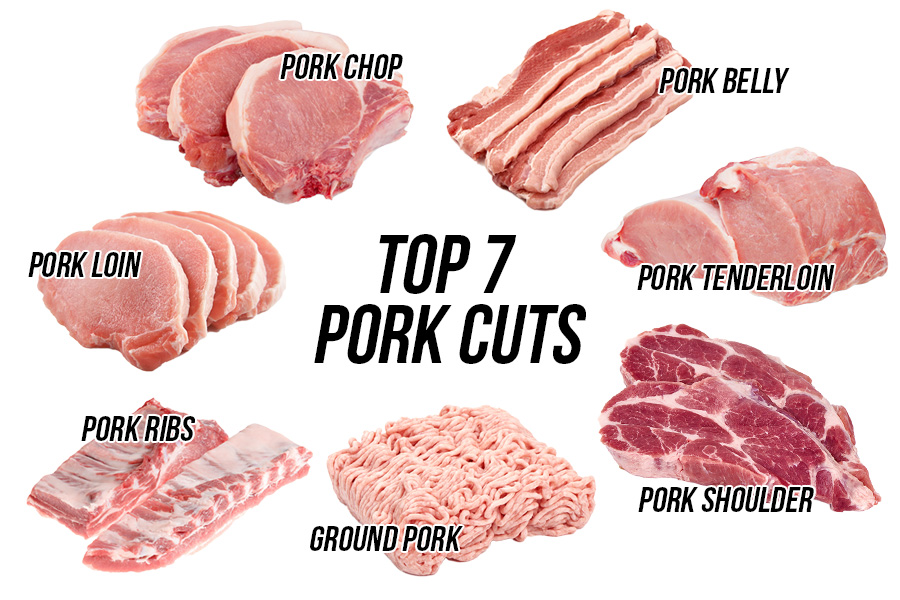
Mapping Flavor: Pork Cuts and Cooking Methods
1. Pork Loin
Pork loin is a budget-friendly and versatile cut of meat that can stretch your meal options while keeping costs in check. With the right preparation and cooking techniques, it can become a flavorful centerpiece for a variety of dishes.
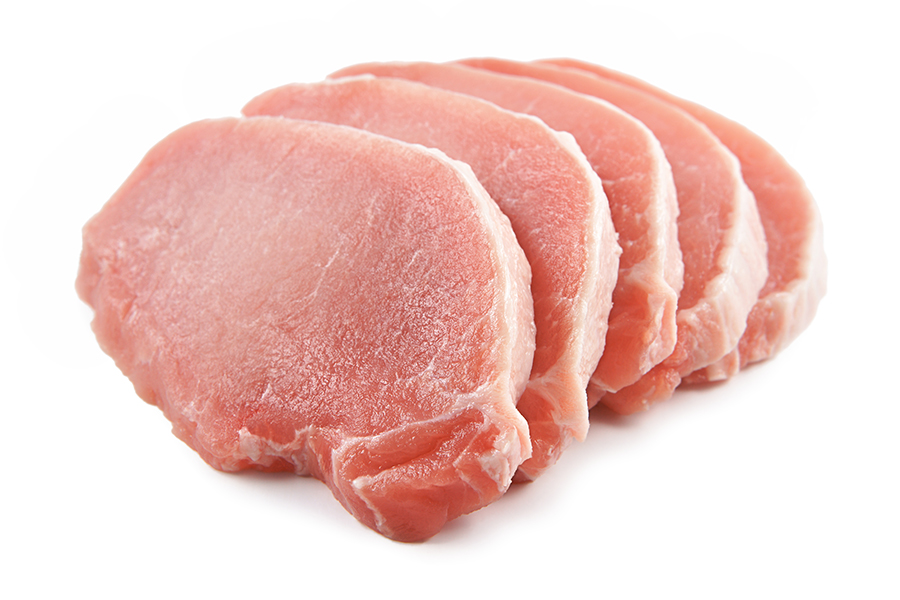
Cost per Pound
On average, boneless pork loin roast costs about $4.49 per pound. However, buying in bulk can significantly cut the price to as low as $1.33 per pound. If you’re looking to maximize savings, purchasing a whole pork loin and cutting it into chops or smaller roasts yourself can be a smart move – it’s cheaper than buying pre-portioned cuts.
Flavor and Texture
Pork loin has a mild, slightly sweet flavor and a tender texture when cooked correctly. Since it’s a lean cut with minimal fat, overcooking can make it dry. Its subtle taste makes it a great canvas for bold marinades or spice rubs. To keep it juicy, cook it with the fat side up so the natural fat bastes the meat as it roasts.
Cooking Methods
Pork loin works beautifully with various cooking techniques. One popular approach is the sear-and-roast method, which creates a flavorful crust while ensuring even cooking. Oven-roasting is another reliable option. For instance, Cook’s Illustrated recommends a slow-roasting technique: cook the pork loin at 275°F until the internal temperature hits 137°F–140°F, then sear it briefly. This method delivers juicy, tender slices with a crisp outer layer and earned top marks for flavor and texture.
For safety, always use a meat thermometer to ensure the pork reaches an internal temperature of 145°F. Let it rest for 5–15 minutes before slicing so the juices can redistribute, keeping the meat moist and flavorful. Brining or marinating beforehand can also help lock in moisture and add depth to the flavor.
Family Meal Ideas
Pork loin is a perfect fit for family meals, thanks to its adaptability. Serve it as a glazed roast with vegetables on the side, or get creative with leftovers by turning them into stir-fries, stews, or sandwiches. Its versatility makes it a go-to option for flexible and satisfying dinners.
2. Pork Chops
Pork chops are another fantastic option for quick and flavorful meals, right up there with pork loin. Cut from the loin or rib section of the pig, they’re known for their juicy texture and mild pork flavor, making them a great match for a variety of seasonings and side dishes.
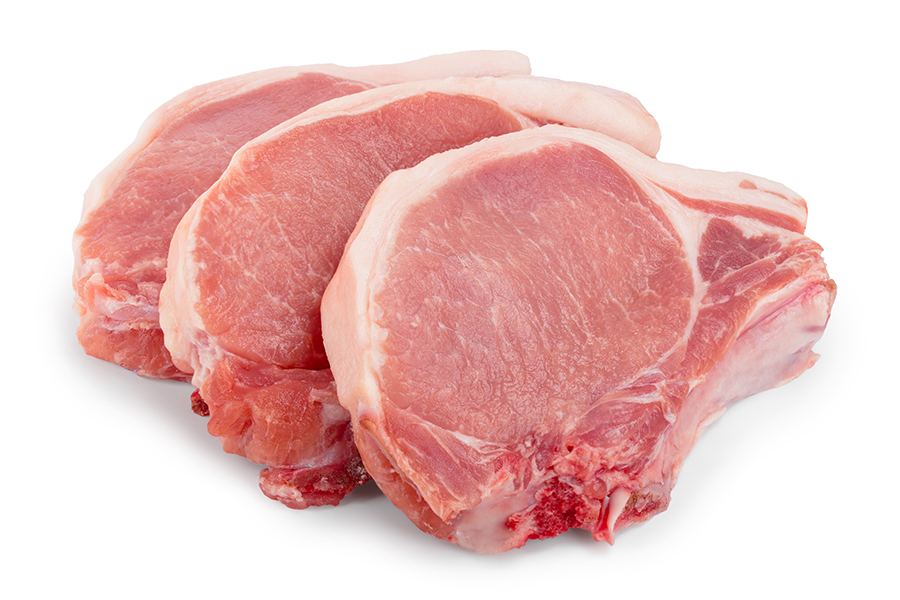
Cost per Pound
Pork chops are a budget-friendly source of protein. For instance, Budget Bytes shared a Glazed Pork Chops recipe in February 2025 that costs about $8.10 for four boneless center-cut chops. While prices can vary depending on the cut and thickness, pork chops generally provide good value when compared to other meats.
Flavor and Texture
Pork chops are leaner than cuts like pork shoulder, which means they contain less fat and fewer calories. Their mild flavor makes them ideal for marinades, dry rubs, or glazes. The texture and fat content vary by type: rib chops are tender with a bit more fat, loin chops are very lean, and shoulder or boneless chops may need extra attention during cooking to keep them from drying out.
Cooking Methods
Pork chops shine when cooked quickly at high heat. Methods like pan-frying, grilling, or broiling create a flavorful sear that locks in juices. Slow cooking, on the other hand, isn’t the best approach for these cuts.
"Instead, make sure your chops get a quick brine in salt water, cook them using high heat, and finish them with a big pat of butter to ensure they are golden-brown and juicy every time." – Meghan Splawn, Food Editor for Kitchn’s Skills content
The Kitchn gave pan-fried pork chops with brine and butter basting a perfect 10/10 for flavor and juiciness. Meanwhile, America’s Test Kitchen suggests starting thick-cut, bone-in chops in a cold pan, then searing them over high heat, flipping every two minutes to get a juicy interior and a beautifully crisp crust. To avoid overcooking, always use a meat thermometer and aim for an internal temperature of 145°F.
Family Meal Ideas
Pork chops are a hit for family meals because they cook quickly and can be adapted to a wide range of flavors. For a comforting dinner, try glazed pork chops with a simple brown sugar and spice rub, paired with mashed potatoes or mac and cheese. Sheet-pan dinners are another great option – season pork chops and cook them alongside apples, potatoes, and asparagus for an easy, one-pan meal with minimal cleanup.
For a twist, sweet and sour pork chops bring an Asian-inspired flair, while pork chops with apples deliver a classic American comfort dish. To get the best results, opt for thicker chops (at least 1½ inches thick) and consider marinating or brining them beforehand to keep the meat tender and pack in more flavor.
3. Pork Shoulder (Boston Butt)
Pork shoulder, often referred to as Boston butt, is a fantastic choice for feeding larger groups. This cut, taken from the upper portion of the pig’s shoulder, is a powerhouse of flavor and versatility, making it a favorite for meal prepping and family dinners.
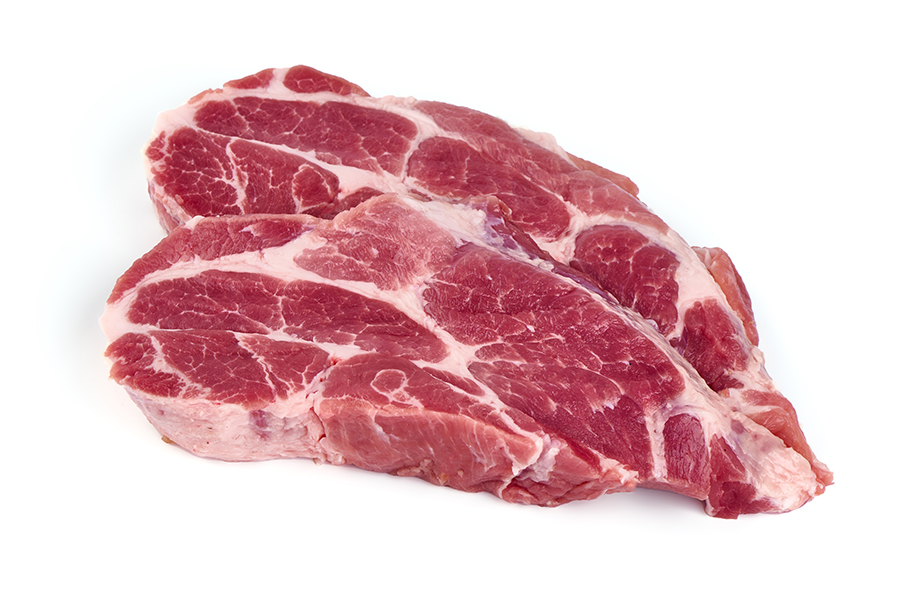
Flavor and Texture
Unlike leaner cuts, pork shoulder boasts a rich, bold flavor that soaks up spices and seasonings beautifully. Thanks to its generous fat content and connective tissue, it transforms into tender, melt-in-your-mouth meat when cooked low and slow. The result? A texture that’s perfect for shredding or slicing, depending on your dish.
Cost per Pound
One of the most appealing aspects of pork shoulder is its affordability. It’s typically priced lower than quicker-cooking cuts like pork chops or tenderloin, making it a budget-friendly option. Plus, a single pork shoulder can easily feed a family of four with plenty of leftovers for additional meals. Its cost-effectiveness pairs perfectly with its adaptability to various cooking methods, making it a smart choice for families looking to stretch their grocery dollars.
Cooking Methods
The key to unlocking pork shoulder’s full potential lies in patience – it thrives with low-and-slow cooking. Whether you’re using an oven, slow cooker, or smoker, this cut rewards time and care with incredible results.
- Oven Roasting: Set your oven to 250°F and cook the shoulder for 1½–2 hours per pound, aiming for an internal temperature of 195°F to 205°F. Position the fat cap on top so it bastes the meat as it cooks.
- Slow Cooker: Cook on low for 10–12 hours or on high for 6–8 hours to achieve fork-tender perfection.
- Smoking: Start at 250°F for the first six hours, then increase to 275°F for another four hours, targeting an internal temperature of 202°F. Jerkyholic documented smoking an 8-pound bone-in pork butt using this method, describing the result as "fall-apart tender, smoky crisped skin, and amazing flavor".
"This recipe delivers fall‐apart tender, flavorful pork butt because of the low and slow cooking method that breaks down tough connective tissue." – Leite’s Culinaria
Family Meal Ideas
A single pork shoulder can provide the base for multiple meals, making it a lifesaver for busy households. From pulled pork sandwiches to hearty tacos and stews, the possibilities are endless.
Stacie Hassing, a Licensed and Registered Dietitian at The Real Food Dietitians, champions pork shoulder for family cooking: "Pork shoulder is definitely my go‐to pick." Her crock pot recipe combines the shoulder with potatoes and carrots for a simple, one-pot meal that’s both satisfying and easy to prepare.
For a global twist, use your cooked pork shoulder to create dishes like Mexican carnitas, Asian-inspired ramen bowls, or comforting European-style stews. The meat’s adaptable flavor profile allows it to shine in a variety of cuisines. To keep it fresh, shred only what you need for the moment and leave the rest whole to retain moisture. Don’t forget to save the drippings – they add incredible depth to other dishes.
4. Pork Belly
Pork belly is a rich, marbled cut of meat that brings bold flavor, versatility, and great value to family meals.
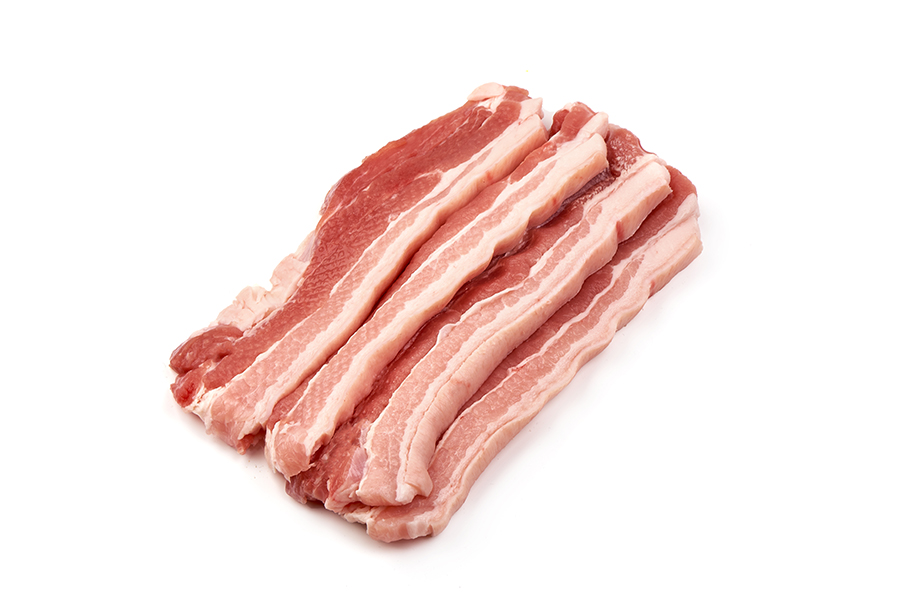
Flavor and Texture
The magic of pork belly comes from its perfect balance of fat and lean meat. As it cooks, the fat slowly melts, infusing the meat with a deep, savory flavor while keeping it tender. The combination of crispy exteriors and juicy interiors makes it a standout ingredient. Plus, it soaks up seasonings beautifully, making every bite a flavorful experience.
Cost per Pound
Pork belly is an affordable option that delivers hearty, satisfying meals without stretching your budget.
Cooking Methods
When it comes to cooking, pork belly is a true multitasker. You can roast it whole using a low-and-slow method for maximum tenderness or slice it into smaller pieces for quick, crispy bites. Braising, roasting, or even air-frying are all excellent ways to prepare it. The key is to let the fat render properly, which creates a rich base and that irresistible crispy finish.
Family Meal Ideas
Pork belly’s versatility makes it a fantastic choice for a variety of family-friendly dishes. For an Asian twist, whip up some pork belly ramen – a comforting bowl of tender meat, savory broth, and noodles. Korean jajangmyeon is another great option, using pork belly as a budget-friendly alternative to pricier cuts, resulting in a hearty noodle dish. Vietnamese braised pork belly (Thịt Kho Tàu), with its caramelized salty-sweet flavor and marinated eggs, is perfect for leftovers that taste even better the next day.
If you’re craving American comfort food, pork belly shines in dishes like burnt ends, tacos, or sliders, ideal for indulgent weekend meals. European classics like French cassoulet or Italian porchetta showcase pork belly’s ability to anchor hearty, memorable family dinners. These dishes not only satisfy but also bring everyone together around the table for a truly special meal.
5. Pork Ribs
Pork ribs bring a touch of tradition and indulgence to any dinner table, offering rich flavors and affordable options for families.
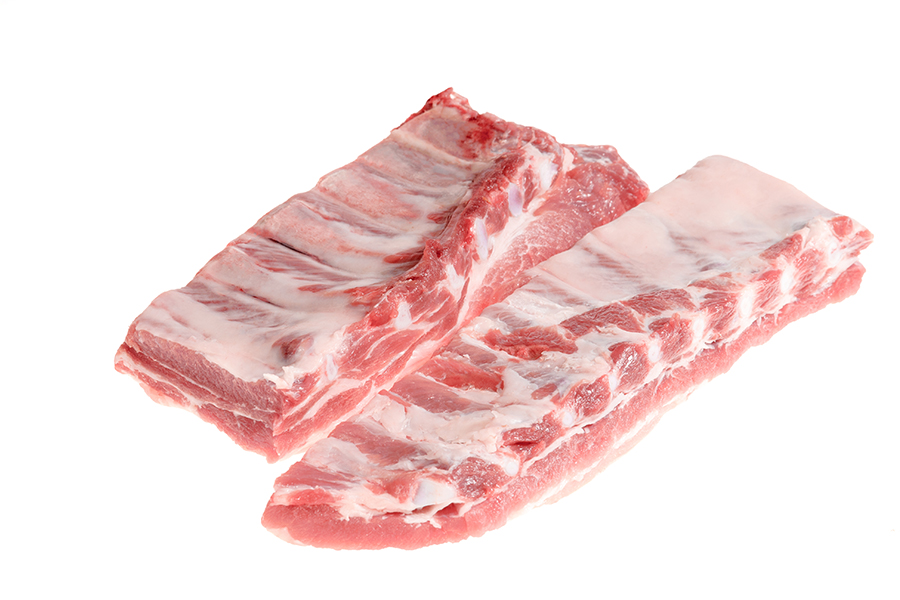
Flavor and Texture
When slow-cooked, pork ribs deliver a smoky, savory flavor and that irresistible fall-off-the-bone tenderness. The slow-cooking process breaks down connective tissue, leaving you with juicy, flavorful bites. These ribs are versatile too – perfect for pairing with a range of seasonings and sauces to suit any palate.
Cost per Pound
While traditional ribs can lean toward the pricier side, country-style ribs are a fantastic budget-friendly alternative. They pack the same bold flavor but come at a lower cost, making them perfect for feeding larger families without breaking the bank.
Cooking Methods
The secret to mouthwatering pork ribs lies in slow cooking. For easy prep, try a slow cooker: season the ribs, add your favorite sauce, and cook on low for 6–8 hours for tender, flavorful results. If you prefer the oven, bake them at a low temperature (around 275°F) for 2–3 hours. For a weekend treat, wrap seasoned ribs in foil, bake them slowly, and finish with a quick broil to caramelize the surface. These methods ensure the meat stays juicy and pairs beautifully with a variety of sides.
Family Meal Ideas
Pairing pork ribs with the right sides turns them into a complete, satisfying meal. Classic comfort foods are a natural fit. BBQ sauce is always a crowd-pleaser, especially for kids, and complements the rich, smoky meat perfectly.
In July 2021, members of the "Cheap Meal Ideas" Facebook group recommended serving pork ribs with mac and cheese, coleslaw, and mashed potatoes as budget-friendly side dishes.
These sides are not just delicious but also economical. Mac and cheese adds creamy indulgence, coleslaw brings a refreshing crunch, and mashed or baked potatoes provide hearty carbs that soak up all the flavorful juices. To keep things interesting, try experimenting with different BBQ sauce styles, from sweet Kansas City blends to tangy Carolina-inspired options.
sbb-itb-5ae85c5
6. Pork Tenderloin
Pork tenderloin is a lean, premium cut that makes it easy to create restaurant-quality meals at home with minimal effort.
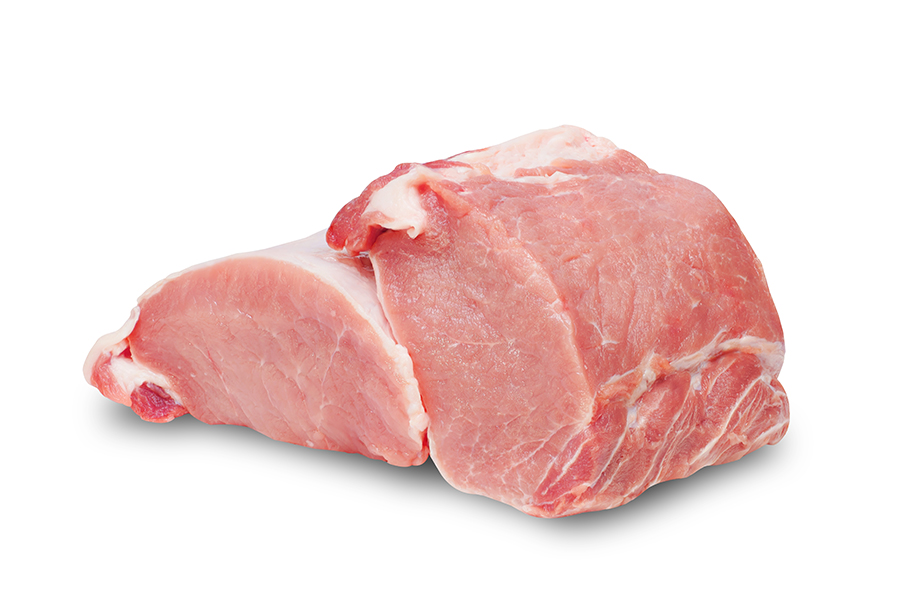
Flavor and Texture
This cut has a mild, delicate flavor that works with a wide range of seasonings and cooking styles. Since it comes from a muscle that does very little work, pork tenderloin is incredibly tender – often even more so than pork loin. Its lean profile means it soaks up marinades, herbs, and sauces beautifully, making it easy to tailor the flavor to your liking. Its mildness is kid-friendly but also pairs well with bold spices for more adventurous palates.
Cost per Pound
Though pork tenderloin is priced higher per pound than fattier cuts like shoulder or ribs, its lean nature means you’re paying for meat, not waste. With no bones to deal with and minimal fat to trim, it’s easy to portion and prepare. A single tenderloin is typically enough to feed a family of four, making it a practical choice for meal planning and reducing leftovers.
Cooking Methods
The key to a perfect pork tenderloin is avoiding overcooking. Use an instant-read thermometer to ensure the internal temperature hits 145°F, then let it rest for 10–15 minutes to lock in the juices. For a quick and flavorful result, sear the tenderloin in a cast-iron skillet over medium-high heat for 6–8 minutes to create a golden crust, then transfer it to a 425°F oven for 14–18 minutes. It’s also excellent when slow-roasted or grilled, though slow cooker methods can sometimes dry it out. These quick-cooking techniques make it a great choice for busy weeknights or last-minute meals.
Family Meal Ideas
Pork tenderloin’s versatility makes it a favorite for both casual dinners and special occasions. For a Mediterranean-inspired meal, try Greek pork tenderloin served with Israeli couscous and a cucumber-feta salad. If you’re craving something Asian-inspired, hoisin-glazed tenderloin pairs beautifully with ramen noodles. Comfort classics like pork stroganoff or coffee-rubbed tenderloin with green beans are perfect for one-pan meals. Leftovers? Thinly sliced tenderloin is great in quesadillas, egg rolls, or fried rice. For a more elevated dish, consider making pork medallions topped with a garlic-strawberry sauce or a maple glaze – an elegant twist that’s sure to impress both kids and adults.
7. Ground Pork
Ground pork is a flexible and budget-friendly option that fits seamlessly into a variety of family meals. It takes simple ingredients and turns them into hearty dishes that both kids and adults can enjoy. Like other pork cuts, it combines versatility and affordability, making it a go-to choice for everyday cooking.

Flavor and Texture
Ground pork has a rich, savory flavor that works beautifully in countless recipes. Thanks to its higher fat content, it stays juicy and tender, ensuring your dishes are flavorful and satisfying. Whether you’re making meatballs or stir-fries, ground pork absorbs seasonings and sauces effortlessly. For instance, you can create an Italian sausage flavor by mixing in salt, black pepper, fennel seeds, and a splash of white wine. Prefer breakfast sausage? Add brown sugar, sage, marjoram, red pepper flakes, and cloves instead.
Cost per Pound
For families watching their grocery bills, ground pork is a practical and economical choice. It’s often much cheaper than ground beef, averaging about $2.79 per pound compared to $5.99 for ground beef. This price difference comes down to the efficiency of hog farming. Pigs grow to market size in just 5–6 months, while cattle take 12–22 months. Plus, pigs reproduce more quickly, with a sow typically birthing 7.5 piglets per litter after a short 115-day gestation period, compared to cows, which usually have one calf after 283 days.
Cooking Methods
Ground pork is quick and easy to cook, making it ideal for busy weeknights. It browns beautifully over high heat, locking in moisture and building flavor. To get the best results, start with a hot skillet or wok, and let the pork brown on one side before breaking it up. This technique helps create a deep, savory sear. From stir-fries and pasta sauces to rice dishes, meatballs, meatloaf, or stuffed peppers, ground pork proves itself as a reliable and versatile ingredient.
Family Meal Ideas
Ground pork adapts effortlessly to a wide range of family-friendly meals. For fast dinners, try dishes like egg roll bowls – mixing ground pork with coleslaw, soy sauce, and ginger – or whip up a 20-minute pork and garlic noodle dish with your favorite veggies. Other quick options include pork fried rice with frozen peas and carrots or ginger pork rice bowls, where everyone can customize their toppings.
It also shines in globally inspired recipes. Think Dan Dan noodles with a spicy sauce, crispy pork, and peanut flakes, or sweet and spicy pork lettuce wraps for a lighter, flavorful meal. You can even mix ground pork with ground beef for dishes like meatballs, meatloaf, or lasagna to add extra moisture and richness. For the ultimate quick fix, a simple ground pork stir-fry can save the day.
Pork Cuts Comparison Table
Here’s a breakdown of popular pork cuts to help you pick the perfect option for your next family meal:
| Pork Cut | Location on Pig | Price (USD/lb) | Best Cooking Methods | Flavor & Texture | Family Meal Ideas |
|---|---|---|---|---|---|
| Pork Loin | Back/spine area | around $1.12 | Roasting, slicing | Lean, mild flavor; tender when not overcooked | Sunday roasts, sandwiches, stuffed preparations |
| Pork Chops | Loin section | around $10.50 | Pan-searing, grilling, baking | Versatile; juicy or lean depending on the cut | Grilled Pork Chops, Pork Chops and Scalloped Potatoes, sheet-pan dinners |
| Pork Shoulder (Boston Butt) | Shoulder/upper front leg | around $1.63 | Slow roasting, braising, slow cooking | Rich, marbled; tender and shreddable | Slow Cooker Pulled Pork Tacos, Pulled Pork Sandwiches |
| Pork Belly | Belly area | around $2.26 | Slow roasting, braising | Rich, fatty; melt-in-your-mouth when cooked well | Asian-inspired dishes, crispy roasted belly, ramen toppings |
| Pork Ribs | Rib cage area | around $1.61 | Barbecuing, grilling with sauce | Tender meat with rich flavor | Family cookouts, weekend barbecues |
| Pork Tenderloin | Inside the loin | around $1.96 | Pan-searing, marinating | Very tender, lean; cooks quickly | Mushroom & Spinach Stuffed Tenderloin, Roasted Pork Tenderloin |
| Ground Pork | Various trimmings | around $2.79–$9.00 | Pan-frying, stir-frying, browning | Rich and juicy thanks to higher fat content | Pork Fried Rice, Egg Roll Bowls, Pork, Apple & Sage Meatballs |
This table highlights the standout features of each cut, making it easier to decide which one suits your cooking style and budget.
For those looking to stretch their dollar, pork shoulder and pork loin offer excellent value, priced between $1.12 and $1.63 per pound. Ground pork is another affordable option, especially when compared to other proteins.
When it comes to cooking, each cut shines in specific methods. Tender cuts like pork tenderloin thrive with quick, high-heat cooking, while tougher cuts, such as pork shoulder, benefit from slow, low-temperature techniques that break down connective tissue. As Ree Drummond from The Pioneer Woman says, "Pork chops have always been a huge favorite in my family", and they’re versatile enough for both simple and fancy preparations.
Texture plays a key role in meal success. Leaner cuts, like tenderloin or certain pork chops, can dry out if overcooked, while fattier options – such as pork belly and ground pork – stay moist and flavorful even with longer cooking times.
How to Buy and Store Pork
Choosing high-quality pork starts with knowing what to look for at the store. Fresh pork should have a pinkish-red color, as this indicates better quality. According to Pork.org, "Pork that is a pinkish-red color will provide a better eating experience". Avoid meat that looks pale or grayish, as it may no longer be fresh.
Marbling – those small flecks of fat within the meat – plays a big role in flavor and texture. Look for cuts with some marbling, even in leaner options like pork chops or tenderloin, as it adds juiciness and flavor. The external fat should be white and free of dark spots, and pork chops should have a fat trim of about ⅛ inch for best results.

When examining the packaging, make sure it’s securely wrapped, with minimal liquid inside, and check the sell-by date to ensure freshness. Vacuum-sealed packaging often keeps pork fresher for longer compared to traditional wraps.
Your sense of smell is another vital tool. Fresh pork should have a neutral or slightly sweet aroma. As Quan Shui Wet Market advises, "Always trust your nose when it comes to distinguishing freshness!". If the meat has an unpleasant or sour odor, it’s a sign to skip that purchase.
Pay attention to the meat’s texture as well. Fresh pork should feel firm and slightly moist – not slimy or sticky. When you press it gently, the meat should bounce back to its original shape almost immediately.
Avoid pork labeled as "enhanced with up to XX% solution" of salt and water, as this often indicates lower-quality meat. Instead, look for packages that list 100% meat. If you’re unsure about labels or certifications, ask your butcher for clarification.
Whenever possible, buy from trusted local sources like Wild Country Meats. Locally sourced pork typically arrives fresher and offers greater transparency about how the animals were raised. Daniel Morris Butchers highlights this benefit, stating, "One of the most significant benefits of locally sourced meat is the unparalleled quality and freshness. Local farmers adhere to strict standards to ensure their animals are raised in healthy, humane conditions. This results in meat that is not only tastier but also more nutritious". Once you’ve chosen your pork, proper storage is key to maintaining its quality.
Storing Pork Safely
Proper storage ensures your pork stays fresh and safe to eat. Refrigerate or freeze it immediately after purchase. Your refrigerator should be set at 40°F or below, while the freezer should maintain a temperature of 0°F. Use an appliance thermometer to regularly check these temperatures.
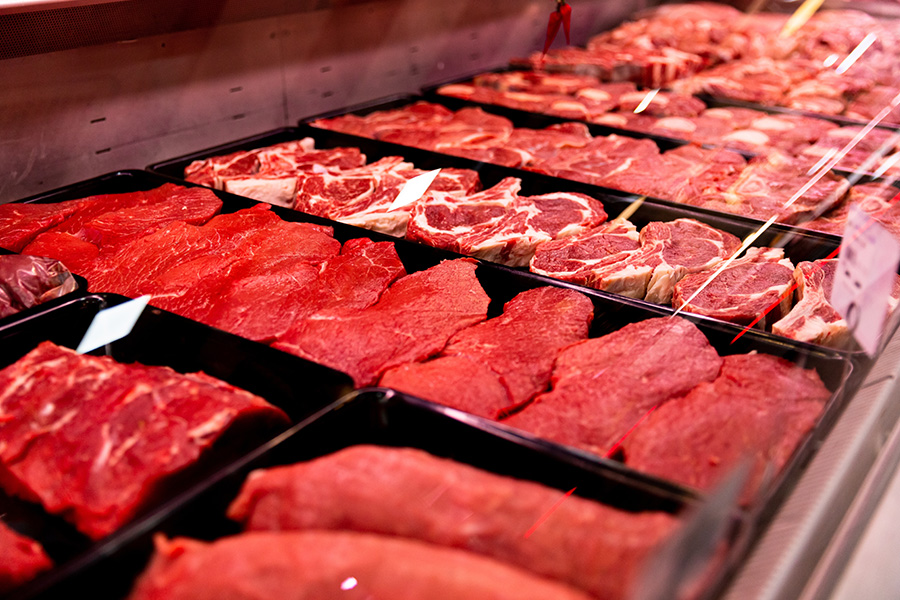
The storage time in the refrigerator depends on the type of pork. Fresh roasts, chops, and ribs can be stored for 3-5 days, while ground pork should be used within 1-2 days. Cooked pork lasts 3-4 days in the fridge.
For freezing, wrap whole cuts in foil or freezer bags and remove as much air as possible. If you’re using store packaging, add an extra layer of wrapping for better protection. While pork remains safe indefinitely at 0°F, its quality diminishes over time. Fresh cuts are best used within 4-6 months, and ground pork within 3-4 months.
When it’s time to thaw frozen pork, do so in the refrigerator, in cold water, or using the microwave. Avoid thawing meat at room temperature, as this can encourage bacterial growth. Pork thawed in the fridge can be safely refrozen, though there might be a slight drop in quality. Always store raw pork separately from cooked foods to reduce the risk of cross-contamination.
If you notice freezer burn on your pork, trim away the affected areas before or after cooking. While it doesn’t make the meat unsafe, it can impact the flavor and texture. By following these tips, you’ll ensure your pork stays flavorful and fresh from the store to your plate.
Conclusion
Understanding these seven pork cuts can completely change the way families plan meals. From the budget-friendly pork shoulder, priced around $2-$4 per pound, to the convenience of quick-cooking pork chops, this knowledge empowers families to make smarter choices that align with both their budget and cooking preferences.
On the financial side, this insight is a game-changer. Affordable options like pork shoulder and ground pork not only pack a flavorful punch but can also stretch across multiple meals. For those looking for a balance between cost and ease, pork loin offers a practical middle ground. Buying whole cuts and portioning them at home is another simple way to save money without sacrificing quality.
When it comes to cooking, knowing the best methods for each cut builds confidence in the kitchen. A meat thermometer becomes your best friend, helping to achieve perfect doneness while debunking the myth that pork must be overcooked. The result? Juicier, more flavorful meals every time.
Pork’s versatility is another huge plus. Pork chops are ideal for quick dinners, pork shoulder turns into melt-in-your-mouth pulled pork, and ground pork works wonders in everything from meatballs to stir-fries. This variety keeps meal planning exciting and helps avoid the dreaded dinner routine burnout.
As you grow more comfortable, don’t shy away from experimenting. Start with affordable cuts like pork shoulder, which is forgiving and perfect for slow cooking. Gradually explore different preparations to find what your family loves most. You might discover that a perfectly cooked pork belly becomes a weekend favorite or that ground pork brings fresh inspiration to your weeknight meals.
FAQs
What are the best ways to cook different pork cuts for the best flavor and texture?
For tender cuts like pork loin and tenderloin, stick to dry heat methods like grilling, roasting, or broiling. These techniques help seal in their natural juices and enhance their flavor. On the other hand, tougher cuts such as shoulder or shank shine when prepared with moist heat methods like braising, slow cooking, or stewing. These approaches break down the connective tissues, resulting in a melt-in-your-mouth texture and deep, savory flavors.
Choosing the right cooking method for each cut is the key to consistently delicious and perfectly cooked meals.
What are the best ways to save money when buying pork for family meals?
If you’re looking to cut costs on pork, buying in bulk or opting for larger cuts can be a smart move. You can portion these at home to suit your needs. Cuts like pork shoulder or pork belly, which are often more budget-friendly, work perfectly for slow cooking, resulting in tender and flavorful dishes. Also, watch for sales or discounts at your local grocery store or butcher. Planning your meals around these deals is a great way to make your budget go further without sacrificing tasty meals for your family.
What are some easy and creative meal ideas using pork cuts to keep family dinners exciting?
Pork cuts offer a world of possibilities when it comes to spicing up your family dinners. Need a quick and tasty idea? Bake pork chops in the oven, coat them with BBQ sauce, and serve with a side of crunchy coleslaw. Craving something with a sweet and savory kick? Sauté pork tenderloin with sliced apples and a splash of apple cider – it’s a crowd-pleaser. For a comforting classic, slow-cooked pork roast never disappoints. If you’re in the mood for bold flavors, grilled pork tenderloin topped with chimichurri delivers a refreshing, zesty punch. And for a lighter option, air-fried pork chops give you that crispy texture without the extra oil. These simple yet delicious options will keep your dinner table anything but boring!

